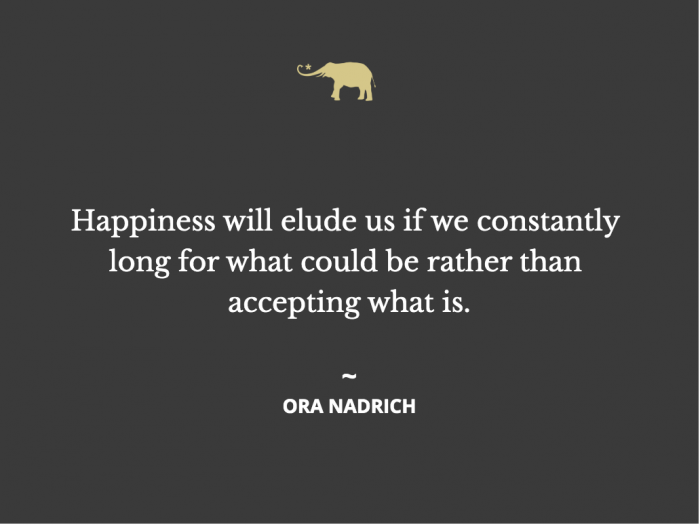The past year has brought enormous pain and devastation with the global pandemic, economic hardship, and our country’s racial protests and political divisiveness.
Now, with signs of hope, we find ourselves surfacing from the rubble wrought from the turmoil and looking for ways to heal the wounds within our own psyches and in the world around us.
Rising from these real challenges calls for a spiritual, political, and cultural awakening. It requires us to be our most authentic selves and to become more aware of our true benevolent nature so that we can let go of suffering and awaken to a new peace.
Mindfulness, or present moment awareness, will assist us in discovering our authentic selves. It liberates us from our emotional baggage and gives us a more present and balanced perspective.
Mindfulness and authenticity combine seamlessly so that we can show up in all the moments of our lives as present and as real as we can be. We can’t be effectively mindful without being authentic, and vice versa.
This present moment is what matters most. Even if this moment may be the messenger of bad news, we mustn’t “kill the messenger.” Difficult or painful moments can leave us with a strength we never knew we had and an awareness of how to move through our pain in a more tolerant, conscious way. Happiness will elude us if we constantly long for what could be rather than accepting what is.
Here are five ways to use mindfulness to intentionally connect to our authentic selves:
1. Stop the brain’s busyness. The mind likes to be busy. It thrives on activity and distraction, which is why it’s incumbent upon us to teach it how to quiet down and be still from time to time so it can experience what it’s like to be quiet and peaceful. When we feel that we’re not fully present, or we’re reacting to whatever we’re experiencing in a moment, we all have an innate ability to reconnect to the present—our breath.
Putting our focus and awareness on the breath helps us find stillness. It helps us find acceptance and gratitude. Many people use the breath as a type of meditation, allowing them to connect with the wholeness that’s within them. But meditation isn’t the only way to connect. We can experience that feeling when we take a walk and connect to nature, or when we sit quietly savoring a cup of warm, fragrant tea.
When we’re fully present and are surrendered to a moment with total awareness, we experience a sense of non-separation, and that’s when we feel whole, complete, and authentically ourselves.
2. Navigate the moment with neutrality. Staying present in the moment can be challenging if we’re facing something daunting, difficult, or unclear. Emotions, such as anger or insecurity, can make our minds race, and the impulsive need to react can lead us to say or do things we may regret. But if we allow ourselves to open to challenging moments with acceptance, our resistance begins to dissolve.
We can tell ourselves, “I can handle this moment. There’s nothing for me to fear.” We can direct the moment—meaning we can navigate it with neutrality—because we’re no longer constricting or reacting, but allowing for it to just be. Opening up to whatever challenges present themselves, instead of resisting them, helps us ease into those moments, learn from them, and find what rings true for ourselves.
3. Practice life gazing. When we take the time to simply look around us, we can see so much more than we’re busy thinking about what we have to do next. An everyday mindfulness practice lets us become aware of what’s around us.
For example, when we’re stopped at a red light, we can notice what’s out the car window, or we can step outside and observe whatever is taking place on the street. Balancing our day with the time we spend performing work, doing chores, or running errands with taking present moment intervals to stop our minds from being on autopilot helps us to check in with our authentic selves.
4. Replace painful past memories with present perception. For most of us, our past contains some unpleasant or painful memories. As we know, that’s part of life. It’s how we’ve processed those painful experiences, however, and what we continue to tell ourselves about them, that can make the biggest difference in how the past affects the present.
We can begin processing painful memories in a way that allows a new, different impression to take its place. This means distancing and desensitizing ourselves from the unpleasant memory and choosing instead to stay present. That doesn’t mean denying or minimizing what’s happened in any way. Instead, we choose to stay present and to know that anything that happened to us in the past doesn’t define who we are in the present.
5. Strive for a state of elevated awareness. We often function from an unaware place and simply go through the paces of our day. But by practicing mindfulness daily, we find a way to live our lives in the moment that exists right now, fully aware and awake. Finding time to stop the “doing” and connect to our spiritual being will always bring us back to the inner dwelling of our wholeness, which, in essence, is the authentic self. Taking time to connect to and acknowledge our true nature is saying to ourselves, “I recognize that which is worthy, divine, and holy in myself.”
Mindfulness will help us return to our conscious homeland. It lets us experience an expansiveness that feels like we’re a part of all that’s around us. There’s no feeling of separateness. By knowing ourselves better and determining who we authentically are, we can stay on the path of healing and awareness.
~









Read 1 comment and reply